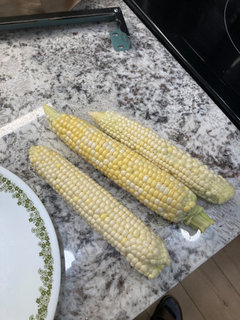Idle curiosity -- what is the furthest north you can grow corn?
denninmi
11 years ago
Featured Answer
Sort by:Oldest
Comments (32)
Ginny McLean_Petite_Garden
11 years agoUser
11 years agoRelated Professionals
Edmond Landscape Architects & Landscape Designers · Garden City Landscape Architects & Landscape Designers · Parole Landscape Architects & Landscape Designers · Willowick Landscape Architects & Landscape Designers · Aurora Landscape Contractors · Milford Landscape Contractors · Peabody Landscape Contractors · Allentown Landscape Contractors · Edinburg Landscape Contractors · Salem Landscape Contractors · Waterford Landscape Contractors · Bay Point Window Contractors · Laurel Window Contractors · Orange County Window Contractors · Tamalpais-Homestead Valley Window ContractorsSlimy_Okra
11 years agodenninmi
11 years agodon555
11 years agodenninmi
11 years agoGinny McLean_Petite_Garden
11 years agodavidpeaceriver__2b
11 years agomacky77
11 years agosegurelha
10 years agodonna_in_sask
10 years agoSlimy_Okra
10 years agoshillanorth Z4 AB
10 years agodon555
10 years agoPudge 2b
10 years agoHU-344687189
2 years agoØyvind Sunde
last yearL Clark (zone 4 WY)
last yearlast modified: last yearL Clark (zone 4 WY)
last yeardavidpeaceriver__2b
last yearL Clark (zone 4 WY)
last yearlast modified: last yearFrozeBudd_z3/4
last yearlast modified: last yearL Clark (zone 4 WY)
last yeardavidpeaceriver__2b
last yearFrozeBudd_z3/4
last yearlast modified: last yeardavidpeaceriver__2b
last yearlast modified: last yearFrozeBudd_z3/4
last yearBillMN-z-2-3-4
last yearFrozeBudd_z3/4
last yearBillMN-z-2-3-4
last yearlast modified: last yearFrozeBudd_z3/4
last yearlast modified: last year
Related Stories

SAVING WATER11 Ways to Save Water at Home
Whether you live in a drought-stricken area or just want to help preserve a precious resource, here are things you can do to use less water
Full Story
MOST POPULAREasy Green: 23 Ways to Reduce Waste at Home
Pick from this plethora of earth-friendly ideas to send less to the landfill and keep more money in your pocket
Full Story
GARDENING GUIDES10 Easy Edibles for First-Time Gardeners
Focus on these beginner-friendly vegetables, herbs, beans and salad greens to start a home farm with little fuss
Full Story
FRONT YARD IDEAS10 Ideas for a Front-Yard Edible Garden Your Neighbors Will Love
Choosing attractive, well-mannered plants and sharing the bounty will go a long way toward keeping the peace
Full Story
HOUZZ TV FAVORITESHouzz TV: See How Early Settlers Lived in This Restored Pilgrim House
Passionate restoration and preservation efforts give a 1665 home an honored place in the present
Full Story
HOUSEKEEPINGTo-Dos: Your March Home Checklist
It’s time to rid yourself of winter’s heaviness and set up for spring
Full Story
LIFEHow to Outsmart Backyard Critters
Learn to think like a raccoon, skunk or squirrel to keep your home safe and your garden intact
Full Story
REMODELING GUIDESOne Guy Found a $175,000 Comic in His Wall. What Has Your Home Hidden?
Have you found a treasure, large or small, when remodeling your house? We want to see it!
Full StorySponsored
More Discussions









FrozeBudd_z3/4